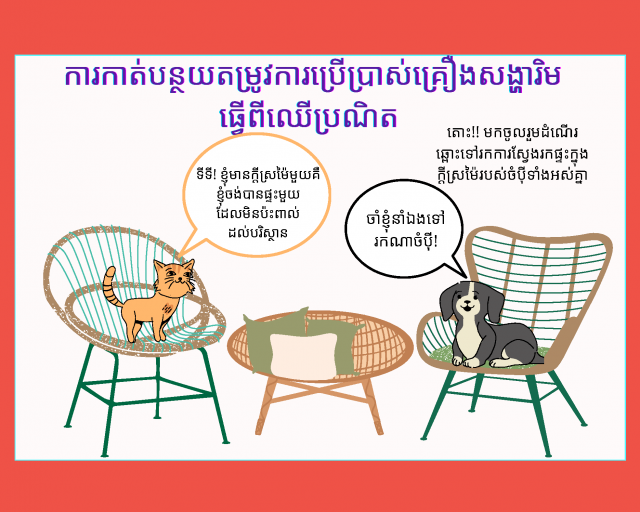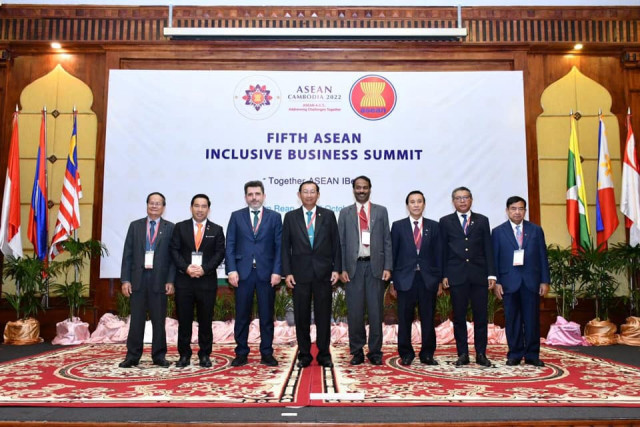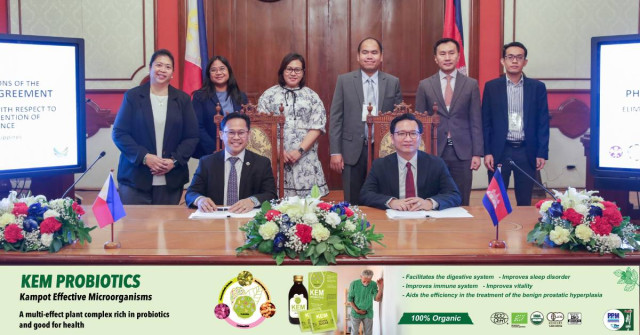Young Take Lead in Deforestation Battle

- By Sao Phal Niseiy
- January 14, 2022 5:06 PM
Luxury furniture targeted to save trees
PHNOM PENH --Young Cambodians have taken part in a campaign to curb demand for luxury wooden furniture, which has been fueling deforestation.
Awareness campaigns have involved young people who took part in competitions organized by USAID-funded Cambodia Green Future Activity. One campaign was a crowd-sourced competition on demand reduction for luxury wood furniture.
Five groups won top spots for creative work to spread knowledge on the impact of the demand on forests.
Student Sovannvong Voeurn, 16, said he had been excited to learn that his group won first place.
His group used a comic book to introduce information on luxury furniture and its impact.
“I discussed story ideas and also the concept with another group partner, and we decided to make a comic as we want to encourage more reading among our people,” said Voeurn, a grade 11 student at E2STEM school at Preah Yukunthor High School.
“Most of the time, I notice that there are more videos than reading material,” Sovannvong said, adding the book also includes funny stories about the environment so readers won’t get bored.
He said that as a member of the young generation, he wants younger people to read the comics so that they can learn from a young age. His team hopes that children can become aware of environmental issues.
“In the meantime, we also offer messages that incentivize people to use handmade furniture. This will support our local communities,” he said.
Sisovann Ouk, chief of party at Cambodia Green Future Activity said the project’s main objective is to promote environmental protection and the sustainable use of natural resources through social and behavioral change communication.
He hopes that the campaign will lead to a change and contribute to forest and wildlife protection.
“Eventually it will help keep the trees where they belong by working with youth who care about nature, the environment and wildlife,” he said.
Cambodia’s rapid economic development has contributed to a change in people’s lifestyles. One result is the use of luxury wooden furniture at home, especially by older people. This is a factor leading to illegal logging and deforestation.
Sisovann says the appetite for luxury wooden furniture has led to significant loss of forests and wildlife habitat in protected areas. However, people have not really been aware of this.
“Often purchasers of luxury wooden products do not realize that they are directly contributing to deforestation and wildlife habitat loss,” he said.
Yeng Sopheng, program manager at local non-governmental organization Khmer Youth Association (KYA) agreed that many people remain less knowledgeable about the issue.
“We have seen this trend when people like using luxury furniture for house decoration. But people don’t know what happens behind that. The only thing they see is the beauty of those products,” Sopheng said.
“They don’t know that the growing demand will lead to increasing supplies. So, where they get those kinds of products? Of course, they get from cutting down trees and extracting natural resources.
The change in social and behavior change will contribute significantly to sustainable protection of natural forest and wildlife habitat. However, experts like Sisovann believe that this will take time.
“Through the campaign we hope that people will become aware about the consequences of deforestation and how the purchase of luxury wood furniture and products is related to deforestation,” he said.
USAID Cambodian Green Future will also carry out two campaigns to protect Cambodia’s biodiversity, one focused on reducing bushmeat consumption and one on the prevention of littering.
For young people like Sovannvong, producing creative works about the benefits of forests and the impact of using luxury furniture remains his priority to drive a change in the perception and behavior of people toward the environment. He also tries to influence friends and family to alter their behavior.
“I really want to see a change. I noticed that older people including my family members used to like that kind of furniture but now they try to reduce that as I have tried to explain to them about how their behavior contributes to environmental damage, especially trees,” he said.
In terms of promoting awareness on forest protection, Sisovann said more work needs to be done to incentivize people to plant trees and buy eco-friendly furniture.
“Planting more luxury and rare tree species at schools and public spaces and preventing deforestation in protected areas will protect Cambodia’s forests and biodiversity and help to ensure that forests continue to provide valuable ecosystem services to the Cambodian people,” he said.
He believes that the awareness campaign remains the top priority and needs to scale up with more stakeholders taking part.
“The general public, the government agencies as well as civil society groups should increase the dissemination of the kind of information to raise awareness,” he said.
“When they really comprehend, they will not only change their behavior but join the protection efforts.”















